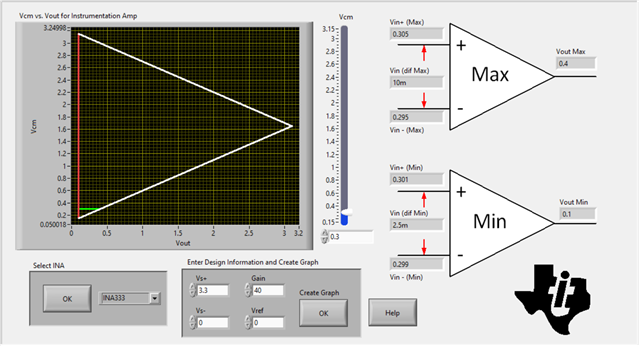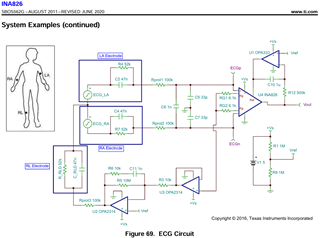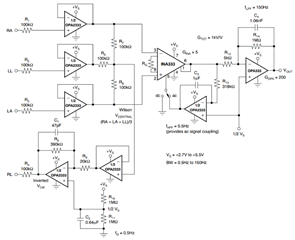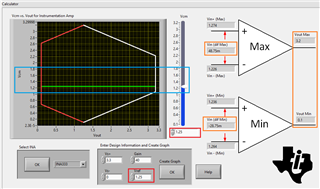Tool/software:
Dear Team,
I need to design an ECG amplifier using INA333.
My signal spec is given below.
- BW = 0.47Hz..40Hz (-3dB)
- Signal amplitude max. 10mVPV (peak-to-valley), DC offset max ±300mV
- Sample rate = 256Hz
- Assume the noise level of the system (referred to input) = 50uVPV (peak-to-valley)
If my understanding is correct the peak voltage of ECG signal is 10mV.I was not able to understand the minimum voltage.
offset voltage is either 300mV or -300mV.This is the common mode voltage I believe.
My amplifier will be working from with 3.3V supply.The final system will be a battery operated one with a max battery voltage of 4.2V.
Below is the image from TI calculator.

I choose the common mode voltage as 0.3V using the slider
From the above image what I understood is I need to provide a minimum gain of 40 because my maximum signal is 10mV.Please correct me if I am wrong
May I know how to accommodate the offset of -.3V
Regards




